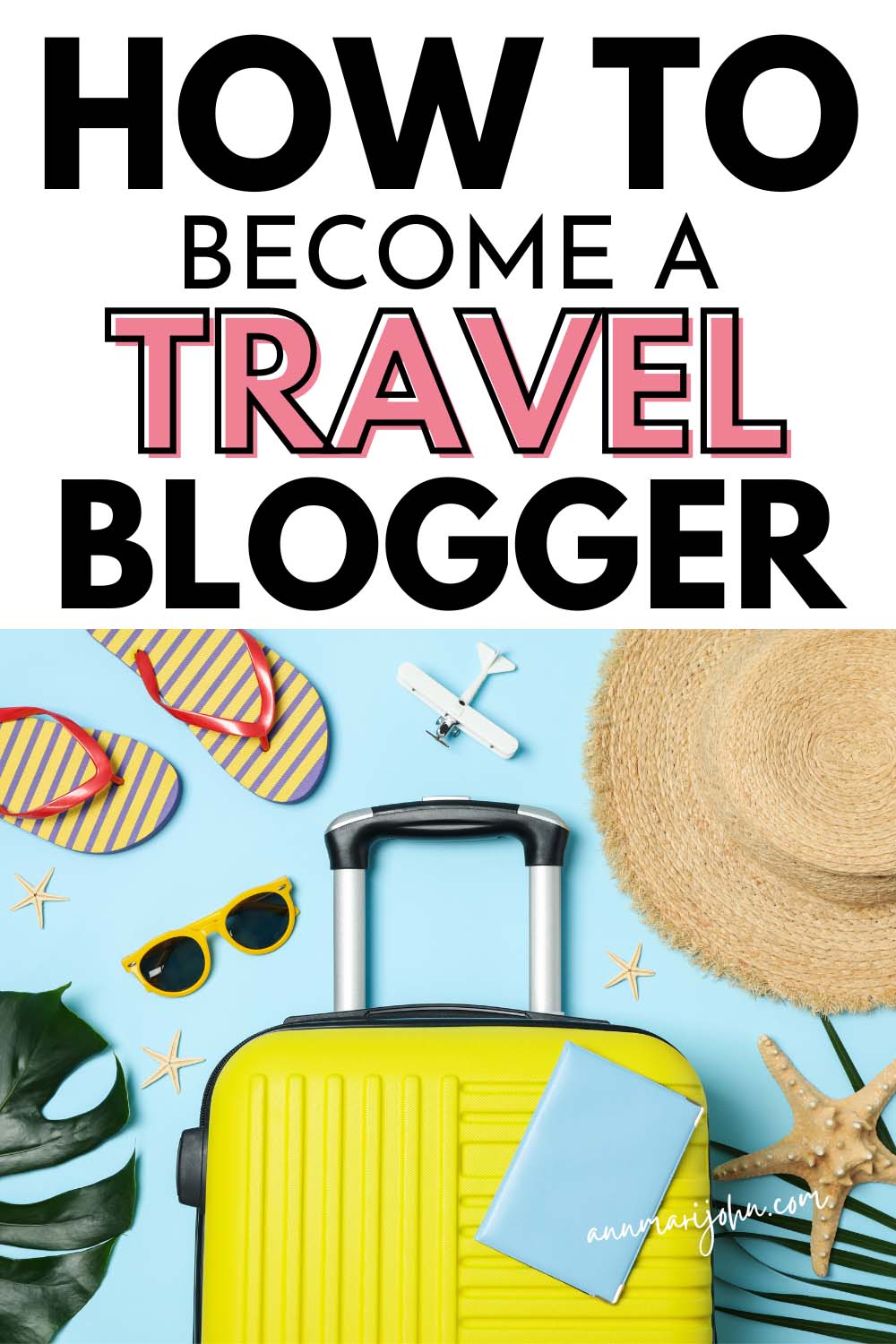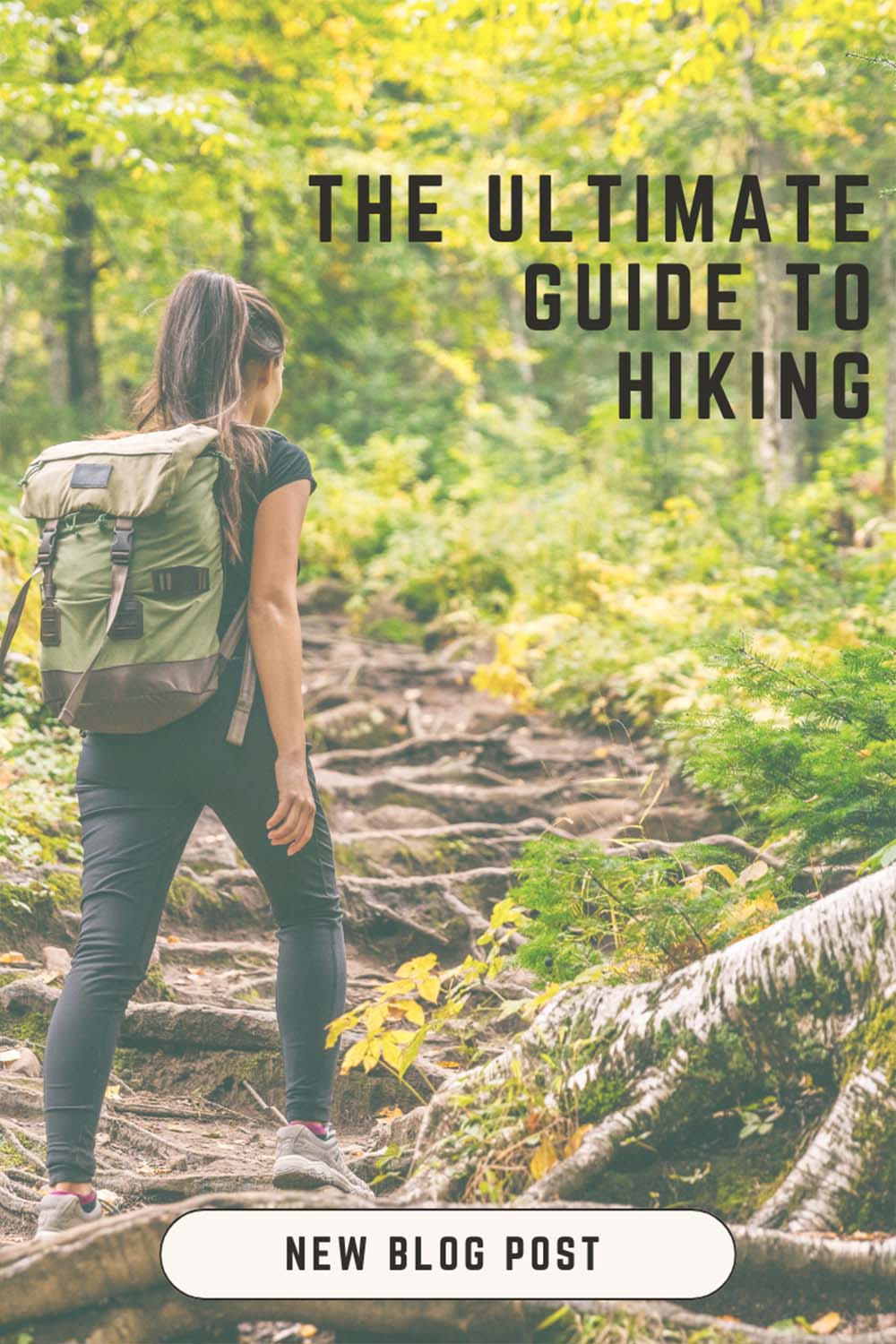Learn how to become a successful travel blogger and turn your passion into a thriving career. Our guide provides expert tips, strategies, and insights for creating a captivating online presence.

Do you dream of exploring the world and sharing your adventures? Becoming a travel blogger offers an incredible opportunity to turn your passion into a career. This guide will equip you with the essential tools to kickstart your journey. From crafting captivating content and building an engaged audience to learning how to earn money from traveling, this guide is tailored to address your unique challenges and aspirations.
Prepare to start an exhilarating ride filled with invaluable insights, actionable strategies, and expert tips from successful travel bloggers. Let’s unlock the secrets to creating a thriving online presence and living your wanderlust dreams.

Selecting Your Niche and Branding
Identifying a unique niche that resonates with your interests and expertise is the first step in your travel blogging journey. This could include anything from solo travel and luxury escapes to eco-tourism and cultural explorations. By finding your niche, you’ll be able to create content that truly speaks to your target audience.
After identifying your niche, develop a memorable and distinct brand around it. This includes choosing a blog name that’s scalable and can grow with your content. Your brand should reflect your personality and the essence of your travel adventures, making it instantly recognizable to your readers.
Finding Your Voice and Style
As you establish your brand, it’s essential to find your unique voice and style. Your writing should be an extension of your personality, allowing readers to connect with you on a personal level. Whether you prefer a witty tone or a more informative and educational approach, authenticity is key.
Additionally, consider the visual elements that will represent your brand. Develop a consistent color scheme, typography, and image style that aligns with your niche and resonates with your target audience.
Setting Up Your Blog
Now that your niche and brand are in place, bring your travel blog to life. One of the first decisions you’ll need to make is choosing a blogging platform. Popular platforms offer user-friendly interfaces and customizable templates, making it easy for even non-technical users to create a professional-looking blog.
Next, purchase an easy-to-remember domain name that aligns with your brand. This will be the online address where your readers can find you, so make it memorable and relevant to your niche.
Once you’ve secured your domain, it’s time to design your blog. Opt for a clean layout and professional appearance that reflect your personal style and brand identity. Remember, your blog is the digital representation of your travel adventures, so make it visually appealing and engaging.
Early SEO Strategies
As you start creating your digital presence, understanding and implementing basic SEO strategies from the outset will lay the foundation for a successful blog. One crucial aspect of SEO is link building outsourcing. For many new bloggers, building quality backlinks can seem daunting.
Outsourcing this task to skilled professionals can more efficiently boost your site’s authority and search engine rankings, freeing you to focus on crafting compelling content. This early investment in your blog’s SEO health can pay dividends in driving organic traffic.
Optimizing for Mobile
In the mobile-centric world of today, ensuring your travel blog is optimized for mobile devices is crucial. With a significant portion of internet traffic coming from smartphones and tablets, neglecting mobile optimization can alienate a large segment of your potential audience.
Choose a blogging platform or theme that prioritizes responsive design, which automatically adapts your blog’s layout and content for optimal viewing on various screen sizes. Additionally, consider implementing Accelerated Mobile Pages (AMP) to enhance your blog’s loading speed on mobile devices.
Content Creation
Now that your blog is set up, it’s time to focus on how to write a travel blog that captivates and engages. Start producing high-quality content that provides real value to your readers. Share personal stories and expert travel tips that make your posts stand out.
Utilize multimedia elements like photos and videos to enhance your narratives and engage more effectively with your audience. Travel is inherently visual, and your blog should capture that essence.

Creating an Editorial Calendar
Consider creating an editorial calendar to maintain consistency and organization. This tool will help you plan and schedule your content in advance, ensuring a steady flow of fresh posts for your readers.
Use your editorial calendar to map out content themes, seasonal topics, and special events related to your niche. This proactive approach will not only keep your blog active but also align your content with relevant trends and occasions.
SEO and Audience Growth
To ensure your travel blog reaches a wider audience, implementing an effective SEO content strategy is crucial. This involves keyword research to identify the terms and phrases your target audience uses when searching online.
Seamlessly incorporating these keywords into your content can boost its visibility in search engine results. Building high-quality backlinks from reputable websites is also essential to improving your blog’s authority and search engine rankings.
Keyword Research and On-Page Optimization
Keyword research is a fundamental aspect of SEO. Identify the terms and phrases your target audience is searching for and incorporate them naturally into your content. Many online tools help you uncover relevant keywords and assess their search volume and competition.
Beyond keyword integration, on-page optimization involves optimizing various elements of your blog posts, such as titles, headings, meta descriptions, and image alt tags. These elements not only improve the user experience but also signal to search engines what your content is about, increasing its chances of ranking higher in search results.
Building Backlinks and Off-Page Optimization
Off-page optimization is another crucial component of SEO for travel blogs. This involves building high-quality backlinks from reputable websites, which can significantly boost your blog’s authority and search engine rankings.
Engaging in guest blogging, participating in relevant online communities, and collaborating with other travel bloggers can open doors to valuable backlink opportunities. Additionally, leveraging social media and encouraging shares can drive referral traffic and improve your blog’s overall online visibility.
Additionally, regularly update your blog with fresh content and leverage social media to attract and direct traffic to your blog. Engage with your audience, share your posts, and participate in relevant online communities to build a strong following.
Monetization Strategies
While sharing your passion for travel, it’s also possible to earn money from traveling. Explore monetization strategies such as affiliate marketing, sponsored posts, and creating digital products that can help turn your travel experiences into a sustainable income.
Affiliate Marketing
For travel bloggers, affiliate marketing is a popular monetization strategy. By promoting products or services from travel-related brands and earning a commission on any resulting sales, you can generate passive income from your blog.
To succeed with affiliate marketing, it’s essential to choose relevant and high-quality products that align with your niche and provide value to your readers. Authenticity and transparency are key, as your audience will appreciate honest recommendations over blatant promotion.
Sponsored Content and Brand Partnerships
As your blog gains traction and builds a loyal following, brands may approach you for sponsored content opportunities or brand partnerships. These collaborations can involve creating sponsored blog posts, social media campaigns, or even participating in press trips or hosted experiences.
When considering sponsored opportunities, it’s crucial to vet potential partners carefully and ensure their values and offerings align with your brand and audience. Clear disclosure and transparency regarding sponsored content are also essential to maintaining trust with your readers.
Building relationships with brands and tourism boards can also open doors to press trips or sponsored content opportunities. As your audience grows, so too will your potential for earning revenue from your travel blog.
Networking and Community Engagement
Successful travel blogging is not just about creating content; it’s about building a community. Connect with other travel bloggers and join blogging communities to exchange tips, support, and potential collaboration opportunities.
Attending Conferences and Events
Attending travel blogging conferences and events can be a valuable networking opportunity. These gatherings bring together industry professionals, brands, and fellow bloggers, allowing you to forge connections, learn from experts, and potentially secure collaborations or sponsorships.
Engaging with Your Audience
Engage with your readers through comments, social media, and personalized emails to build a loyal following. Respond to their questions, share their experiences, and foster a sense of connection. A strong community can not only provide valuable feedback but also open doors to new opportunities and adventures.
Consider implementing strategies like running social media contests, hosting giveaways, or organizing meet-ups or events to further cultivate your community and strengthen bonds with your audience.
Personal Branding and Storytelling
Successful travel bloggers understand the power of personal branding and storytelling. Your unique voice, experiences, and perspectives are what set you apart from countless other travel blogs. Cultivate your brand by infusing your content with authenticity and vulnerability, allowing your readers to connect with you on a deeper level.
Crafting Compelling Stories
While travel tips and destination guides are valuable, it’s the art of storytelling that truly captivates your audience. Share the highs and lows of your journeys, the lessons you’ve learned, and the transformative experiences that have shaped your worldview.
Incorporate descriptive writing techniques, such as vivid imagery, sensory details, and relatable anecdotes, to transport your readers to the destinations you’ve explored. Embrace your unique voice and writing style, allowing your personality to shine through every word.
Building a Multimedia Portfolio
In addition to written content, create a diverse multimedia portfolio that showcases your skills in photography, videography, and other visual mediums. High-quality visuals are essential for capturing the essence of travel and enhancing your storytelling abilities.
Invest in a good camera, and editing software, and learn techniques for capturing stunning travel photographs and videos. Share your work on visual platforms to further expand your reach and build your brand.
Leveraging Social Media and Influencer Marketing
Social media is a powerful tool for travel bloggers, not only for promoting their content but also for building relationships, collaborating with brands, and participating in influencer marketing campaigns.
Developing a Social Media Strategy
Develop a cohesive social media strategy that aligns with your brand and content goals. Identify the platforms where your target audience is most active and focus your efforts there. Consistently share high-quality content, engage with your followers, and participate in relevant conversations and hashtags.
Influencer Marketing Opportunities
As your social media presence grows, you may become eligible for influencer marketing opportunities with travel brands and destinations. Brands often collaborate with influencers to promote their products or services through sponsored posts, giveaways, or brand ambassadorships.
When considering influencer marketing opportunities, carefully evaluate the brand’s alignment with your values and target audience. Maintain transparency by clearly disclosing sponsored content, and prioritize authenticity over monetary gain to preserve your audience’s trust.
Continuous Learning and Adaptation
The world of travel blogging is constantly evolving, with new trends, technologies, and best practices emerging regularly. Successful bloggers embrace a mindset of continuous learning and adaptation, staying ahead of the curve and consistently refining their craft.
Staying Up-to-Date with Industry Trends
Stay informed about the latest trends and developments in the travel blogging industry by following industry leaders, attending conferences and webinars, and participating in online communities. This will help you identify emerging opportunities, adapt your strategies, and remain relevant in an ever-changing landscape.
Embracing New Technologies and Platforms
As new technologies and platforms emerge, be open to exploring and embracing them. From virtual reality experiences to AI-powered content creation tools, these advancements can enhance your storytelling capabilities and provide new avenues for audience engagement.
Additionally, stay vigilant about changes in algorithms and platform policies that may impact your content distribution and monetization strategies. Adapt your approach as needed to ensure your blog remains visible and profitable.
| Topic | Key Points |
| Selecting Niche & Branding | Identify unique niche, memorable brand name/identity reflecting personality |
| Content Creation | High-quality content, personal stories, expert tips, multimedia, editorial calendar |
| SEO & Audience Growth | SEO strategies, keyword research, link building, and social media engagement |
| Monetization | Affiliate marketing, sponsored content, digital products, and brand relationships |
| Community Engagement | Network with bloggers, attend conferences and events, and build a loyal following |
| Personal Branding | Develop a unique voice, storytelling, and multimedia portfolio |
| Continuous Learning | Stay updated on trends and adapt strategies as needed |
Conclusion
Becoming a successful travel blogger is a journey filled with adventures, challenges, and rewards. By following the steps outlined in this guide, from selecting your niche and branding to creating engaging content, optimizing for SEO, monetizing your blog, building a strong community, and continuously learning and adapting, you’ll be well on your way to turning your travel passion into a thriving online business.
Remember, consistency, authenticity, and a willingness to learn and adapt are key to standing out in the ever-evolving world of travel blogging. So pack your bags, grab your camera, and get ready to share your unique perspective with the world!
Frequently Asked Questions
- How much does it cost to start a travel blog?
Initial costs can vary, typically involving expenses for domain registration, hosting, and possibly some premium plugins or themes. Ongoing costs will include marketing, SEO tools, and content creation resources.
- How long does it take to make money from a travel blog?
Making a significant income can take time, often several months to a year, depending on your niche, content quality, and marketing efforts.
- Do I need to be a tech expert to start a travel blog?
No, many platforms offer user-friendly tools for non-technical users. Basic knowledge of blogging and some understanding of SEO can be sufficient to get started, with many resources available to learn as you grow.
- What makes a successful travel blog?
Successful travel blogs offer unique, high-quality content, engage with their audience, and consistently provide value to their readers.
- How important is social media for travel bloggers?
Social media is crucial for travel bloggers as it helps drive traffic, engage with readers, and build an online community.
- Should I focus on a specific niche or cover a broad range of travel topics?
Focusing on a specific niche can help you differentiate your content and attract a more targeted audience, but covering a broad range of topics can also appeal to a wider readership.
- How can I stand out from other travel bloggers?
To stand out, focus on creating unique, high-quality content, engaging with your audience, developing a strong personal brand, and leveraging multimedia storytelling.
- What are some effective monetization strategies for travel blogs?
Common monetization strategies include affiliate marketing, sponsored posts, selling digital products, offering freelance writing services, and partnering with brands for sponsored content or press trips.
- How important is SEO for travel blogs?
SEO is crucial for travel blogs, as it helps increase visibility and drive organic traffic from search engines.
- What are some tips for building a loyal readership?
To build a loyal readership, consistently create valuable content, engage with your audience, build a strong community through social media and email newsletters, and focus on personal branding and storytelling.
